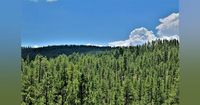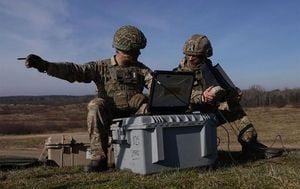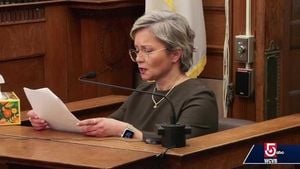On August 29, 2025, the Trump administration reignited a fierce debate over the future of America’s national forests by announcing plans to rescind the 2001 Roadless Rule—a regulation that has protected nearly 60 million acres of pristine forest land from road construction for almost a quarter of a century. The move, according to the U.S. Department of Agriculture (USDA), is aimed at bolstering wildfire suppression efforts and enabling more active forest management. But as the proposal heads into a public comment period that ends September 19, it’s drawing sharp criticism from scientists, environmentalists, and former federal officials who question both the logic and the potential consequences of opening up these wild lands to new roads.
“For nearly 25 years, the Roadless Rule has frustrated land managers and served as a barrier to action—prohibiting road construction, which has limited wildfire suppression and active forest management,” U.S. Forest Service Chief Tom Schultz said in a statement released Wednesday, as reported by NPR. The administration argues that more roads will give firefighters better access to remote areas and allow for more proactive interventions, such as thinning overgrown forests or creating fuel breaks to slow the spread of wildfires.
However, a growing body of research suggests the relationship between roads, people, and wildfire is far more complicated than it may first appear. As Alexandra Syphard, a senior research scientist with the Conservation Biology Institute and director of science for the Global Wildfire Collective, told NPR: “One of the most fundamental concepts in fire, especially in terms of fire geography, is that roads are the dominant place where you see ignitions.” In short, where there are roads, there are people—and where there are people, wildfires tend to follow.
Syphard, who has spent nearly three decades studying wildfires, points to a simple but powerful pattern: wildfires are much more likely to start within 50 feet of a road than farther away. This isn’t just a statistical fluke. Roads bring vehicles, campers, and other human activity—all potential ignition sources. And the impact goes beyond the initial spark. Plowing new roads into previously untouched forests can change the landscape in subtle but important ways, including altering the mix of plants that grow on the forest floor. According to a 2020 study by the Forest Service’s Rocky Mountain Research Station, non-native plants are twice as common within 500 feet of a road as they are farther away. The study concluded, “Speculation that eliminating road prohibitions would improve forest health is not supported by nearly twenty years of monitoring.”
Despite these warnings, the Trump administration maintains that the Roadless Rule has become an obstacle to effective forest management. In March 2025, President Trump signed an executive order calling for a 25% increase in national timber production, a move that many environmental organizations say is the real motivation behind the push to rescind roadless protections. The USDA, which oversees the Forest Service, has not responded to requests for comment about whether the primary driver is wildfire risk reduction or timber industry interests.
The debate is not new. Since its creation in 2001, the Roadless Rule has been a flashpoint in ongoing legal and political battles involving states, industry groups, and conservationists. During his first term, President Trump stripped roadless protections from Alaska’s Tongass National Forest—the largest intact temperate rainforest in the world—only for those protections to be reinstated by the Biden administration in 2023. The Tongass, home to vast stands of spruce, hemlock, and cedar, has long been a battleground between logging interests and environmental advocates.
Former Forest Service Chief Dale Bosworth, who served under President George W. Bush just after the Roadless Rule was implemented, offers a historical perspective. “The areas that were left roadless, were left roadless for a reason,” Bosworth told NPR. “Because they didn’t have the timber in there and because it was expensive to do road construction.” He points out that the existing rule already allows for limited timber cutting in roadless areas if it improves habitat for threatened or endangered species or reduces the risk of “uncharacteristic wildfire”—meaning fires that are more severe than what the ecosystem would typically experience. “In my view, our timber program should be focused on [improving forest health] anyway, whether you’re going into a roadless area or whether you’re doing that in other areas,” Bosworth said. “If we really focused on that, we’d be probably providing more timber on accident than we do on purpose.”
So, does building more roads actually help firefighters? The answer, according to recent research and expert opinion, is nuanced. A 2021 study by Oregon researchers found that while roadless areas in western forests had fewer wildfire ignitions, the fires that did start tended to burn more land compared to those that began near roads. Matt Thompson, a former Forest Service research forester and now vice president of wildfire risk analytics at Vibrant Planet, explained to NPR: “Fires that start near roads tend to be controlled more quickly and smaller for obvious reasons of rapid detection and access [for firefighters].” In other words, roads can help firefighters reach and suppress fires faster, especially near homes or valuable resources.
But there’s a catch. When fires burn in roadless areas, they’re often far from people and infrastructure—meaning they can spread more widely before being detected or contained. Roads can also serve as fuel breaks, providing a strip of land with less vegetation that can slow or stop a fire’s progress. Thompson cautions, however, that simply building more roads isn’t a silver bullet. “The question is, will we have the resources and can we get that done in time so it’s not just a new risk sitting out there?” he said, emphasizing the need for a “surgical approach” to road construction—targeting specific areas where roads could make a real difference for firefighter safety and community protection.
As the USDA’s formal notice of intent to roll back the Roadless Rule points out, exceptions to the rule have been made in the past, but the majority have been for forest stewardship purposes rather than large-scale logging or road building. The administration claims to have identified 28 million acres of roadless areas at high or very high risk of wildfire, but it has yet to provide details on where these areas are or how new roads would be prioritized.
With the public comment period on the proposed rule change set to close on September 19, 2025, the debate is far from over. Environmental groups, fire scientists, and local communities are weighing in, each with their own vision for the future of America’s forests. As the nation grapples with increasingly severe wildfire seasons and the twin pressures of conservation and resource extraction, the fate of the Roadless Rule—and the millions of acres it protects—hangs in the balance.
For now, the only certainty is that the question of how best to manage America’s wildlands remains as complex, contentious, and urgent as ever.




